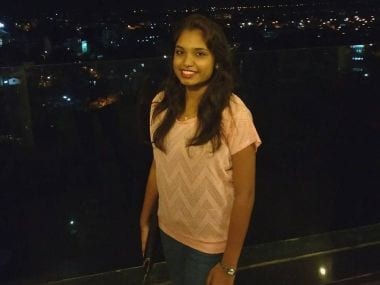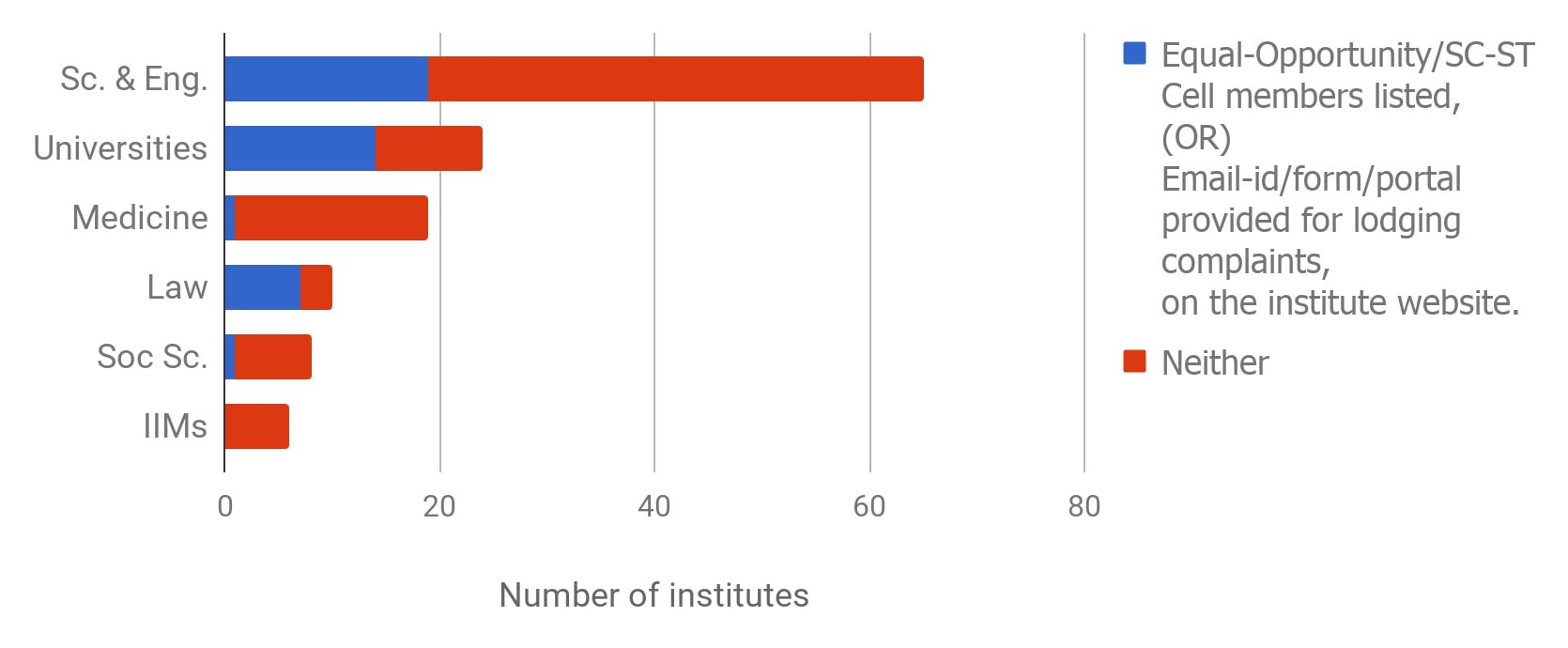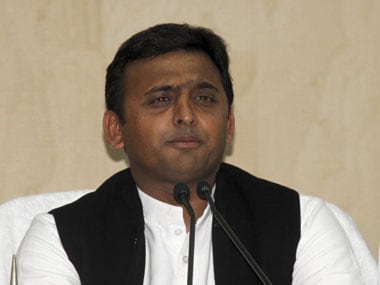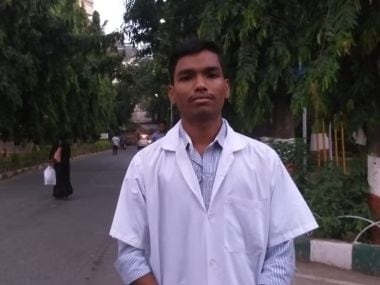Payal Tadvi's suicide exposes how under-representation of Dalits, Adivasis, caste discrimination affect higher education institutes
India Ra. Ravishankar, Sumithra Sankaran, Manish Gautam, Ananya Kumar and Abha JeurkarJun 04, 2019 21:49:45 IST
The 'suicide' of Dr Payal Tadvi is the latest in a long list of lives taken by caste and institutional collusion against Dalits and Adivasis. The gross under-representation of Dalits and Adivasis at every level in institutes of higher education and ubiquity of caste-based discrimination in these spaces go hand in hand. Each event of discrimination, atrocity, and harassment that plays out on academic campuses culminates from abject failure across academia to honestly confront the issue of caste-based violence, but it is seldom regarded so by these institutions and the people running them.
When the violence escalates to the point of death, it is met with disbelief and horror even though the institutional mechanisms that failed the victim, repeatedly, are the same over and over again. Yet, each case is regarded in isolation, as caused by errant individuals/circumstances. What is to prevent the same events from playing out again in another (or even the same) institution, is a question almost never asked by the larger academic community.
 Payal Tadvi. Image/Facebook
Payal Tadvi. Image/FacebookIt was this structural violence that the UGC sought to address with its guidelines to promote equity by setting up of 'equal opportunity cells'(EOCs) in every institute of higher education. The paltry implementation of these guidelines was summarised in a November 2017 report:
"Only 155 universities appeared to have responded to the UGC's letter (seeking 'action taken reports' on establishing cells to look into caste-based discrimination) for the year 2015-16 (India has about 800 universities). Of them, only about half had a webpage where SC/ST students could lodge complaints of discrimination. Less than half - 47 percent- had constituted committees or cells specifically meant to look into complaints of discrimination against SC/ST students. It is perhaps not surprising then that 87 percent of universities reported that they had received zero complaints of caste-based discrimination. Of the 146 complaints that were received, some were apparently addressed through 'lectures', 'counseling' and 'mentorship'."
In this article, we seek to look at the implementation of EOC guidelines at institutions deemed to be among the best in their respective domains — engineering, medicine, natural science, social science, and management. Time and again some of these institutes are celebrated for being at the top in the country, according to national and global rankings. They also receive a disproportionate amount of funding, with IITs, IIMs and NITs having 3 percent of total students getting more than 50 percent of government funds. These, and other institutes of excellence/eminence are often exempt from much monitoring by the UGC, an autonomy that's widely exclaimed despite serious concerns over their exclusionary effects. So how well do these institutes perform in following the UGC guidelines for promotion of equity in higher education institutes?
We searched through the websites of 132 institutes, popular for different fields of study, to see if there exists a functional EOC/SC-ST/SC-ST-OBC cell or any other cell that carries out equivalent functions. Although the EOC and SC/ST and OBC cells do not have exactly the same mandate; since both cells are concerned with broadly similar goals of grievance redressal, sensitisation on issues and promotion of welfare and representation of minority groups in institutes, we scored the institutes as having one if they had either.
To assess the accessibility level of the cell, we used the following metrics:
(i) whether the constituent members of the cell are listed on the website,
(ii) whether contact information (phone/email) of any member or a generic phone/email contact is published, or a complaints portal is available, in order to make complaints,
(iii) whether there is any page suggesting the existence of an SC/ST and OBC cell or EOC on the institute website, and,
(iv) whether the EOC webpage can be accessed in a few clicks from the institution's home page.
In the linked spreadsheet, a 'Y' appearing in every column would indicate a higher level of confidence in the functioning of the EOC than otherwise. We see the first two columns as more important as it's not much use if the institute has a cell whose existence or contact details remain unknown to the students and faculty.
Lastly, we acknowledge that we did not have access to intranet pages and the details of the committee/cell may have been made available there. However, we think this is unlikely as most institutes had details of all other cells made available on their public webpages and we feel that the absence of information is quite likely suggestive of the absence of a committee altogether. We may have mistakenly made omissions during our web-searches although we did our best to be very thorough. We are fairly certain that the mistakes are few and what we report here is largely reflective of the general state of affairs regarding EOCs in these esteemed higher education institutes.

Of the 132 institutes whose websites we surveyed, only 42 had any information that could enable students or faculty to access the EOC/SC-ST Cell or lodge a complaint. Only four of 15 institutes deemed 'institutes of excellence' as per the Central Education Institutions (Reservation in Admission) Act, 2006, only four of the 13 IITs (that were established before 2008), and none of the six first-generation IIMs had this information.
As for the universities, about 60 percent of those surveyed had committees listed or complaint portals on their website. We did not check the various colleges attached to each university, presumably, the universities that are following a protocol are ensuring that the colleges are doing so as well. Finally, it is worthwhile to note that the mandate of EOCs was not to be only to deal with caste-based issues but to strategise and oversee anti-discrimination and welfare measures to improve the representation of other minorities and disadvantaged groups in these institutions, as well.
Since our focus here is primarily on the issue of caste in academia, we did not consider the EOCs in two of the IIMs which we surveyed, that seemed to be solely concerned with promoting the welfare and representation of differently-abled individuals, which is only a part of the mandate of the EOC as stated by UGC. However, we do note that in almost all the institutes which did not have EOCs, there were no other equivalent and targeted cells for other minorities on the campus either.
Our focus on institutes' compliance with the guidelines for EOC, or an equivalent body such as an SC/ST cell, is not rooted in any lofty hopes that it will ensure either discrimination-free campuses or truly inclusive education. We don't envisage a powerful and committed EOC being constituted by any of these institutes, their negligence thus far speaks enough about their commitment to the issue.
Casteism plays out in several ways and the everydayness of it in this these institutions is hardly curtailed by rules and regulations. To quote from the UGC guidelines for promotion of equity in higher education, "the degree of democratisation of higher education has to be increased to a large extent", and it is to highlight the violence perpetuated by these 'citadels of knowledge' through their enduring inaction, that we wish to raise this issue. It is no surprise to us that it was the IITs, IIMs and medical institutes' students who unleashed the 2006 anti-quota agitations, fomenting an intensely vitriolic climate for students belonging to scheduled castes and tribes, across campuses.
It was in the wake of that violence that the Thorat committee was formed to look into allegations of harassment of SC and ST students at AIIMS. The appalling findings revealing the extent of rampant discrimination faced by these students and the corrective recommendations made by the committee led to the UGC guidelines to form EOCs in institutes of higher education.
Yet, these same institutes have been apathetic to these guidelines to sensitise students (and faculty) about casteism and structural violence, to devise programmes to enhance welfare, provide redressal for discrimination and harassment, and promote representation on their campuses.
One of the details that have surfaced after Payal's death was that she was harassed on a Whatsapp group. It is highly distressing that there was no one on that group who could stand up for Payal or reach out to help her and it drives home the need for representation by marginalised students to at least help each other survive the default casteism on these campuses.
One important recommendation made by the Thorat Committee to AIIMS was to have a student from the SC/ST category, on every student and student-affairs related committee. This recommendation did not become part of the UGC guidelines. But had it, it would have exposed the pathetically low enrollment of these students in the esteemed higher education institutions. The institutes of excellence/national importance, for instance, are exempt from implementing reservations. These institutes, for all the autonomy that they enjoy and their claims of excellence-eminence-national importance, make no attempt to nevertheless fulfill that obligation to society, irrespective of their being bound or not by the UGC Reservation in Admissions Act. Or even to influence educational policy in such a manner as to correct such perverse conceptions of excellence and nation-building, to which social-justice in not absolutely central.
We have made no attempts to identify whether any institutes in our list were exempt from fulfilling the UGC guidelines on the creation of EOCs. We do not think it necessary because these institutes, of their own accord, or to comply with the UGC, should be taking more proactive measures to make their campuses safe, accessible and fulfilling to everyone. They are ultimately answerable to society.
About the authors: Abha Jeurkar (PhD researcher at TISS), Ananya Kumar (Christ University), Manish Gautam (alumnus of IIT-K & IISc), Ra Ravishankar (alumnus of BITS, Pilani) & Sumithra (Research Associate at IISc).
Updated Date: Jun 04, 2019 21:49:45 IST
Tags : Caste Discrimination, Caste Discrimination In Higher Education, CriticalPoint, Equal Opportunity Cells, IIM, IIT, Maharashtra, Medical Institutes, Payal Tadvi,Scheduled Caste, Scheduled Tribe, University Grant Commission
Also See

'Casteism hidden behind white coats': Students, professors say medical field rife with bias against marginalised

Payal Tadvi suicide case: Akhilesh Yadav calls death of tribal medical student a 'murder' of constitutional protection to Scheduled Tribes

'When we are constantly made to feel inferior, we internalise it': MBBS student from Tadvi Bhil community speaks up after Payal Tadvi suicide